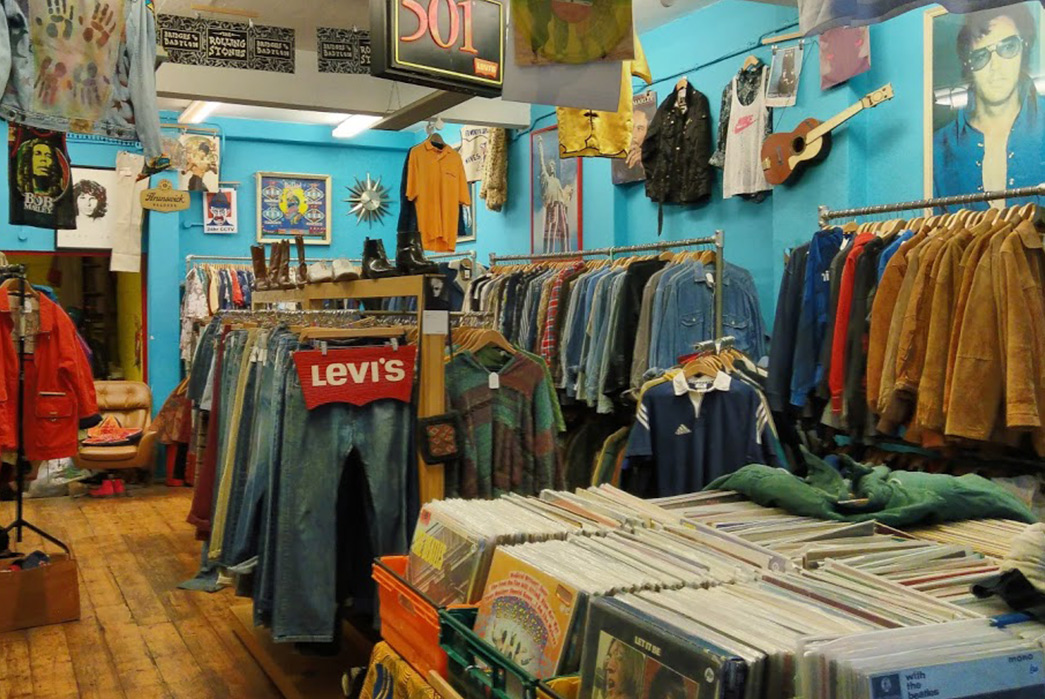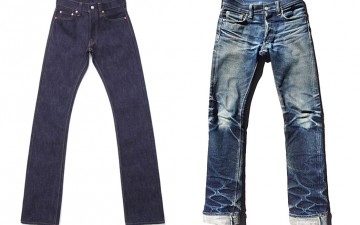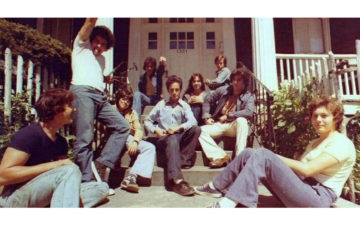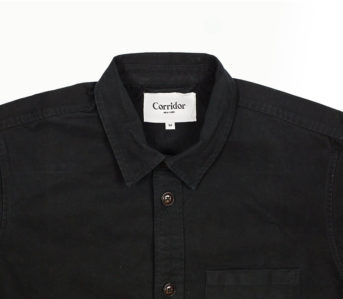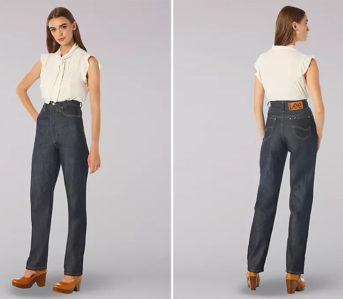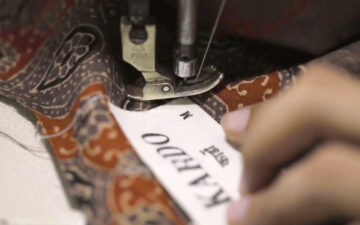Vintage clothing. Where to start? What was once a fairly niche way to buy clothes—at least in a fashion sense—is now a huge and multi-faceted industry that has redefined how many of us look at clothing. Shopping vintage provides an opportunity to find rare, unique, and high-quality pieces, as well as offering a more sustainable way to buy clothing often at affordable prices.
If you’ve been shopping vintage for a while, you will have undoubtedly picked up a few gems that have got you hooked. If you haven’t—you may not have been looking in the right places, or in the right ways. If you’re looking to start thrifting or vintage shopping regularly, we’ve put together this primer on the fundamentals of vintage clothing.
Types of Vintage Clothing Outlets
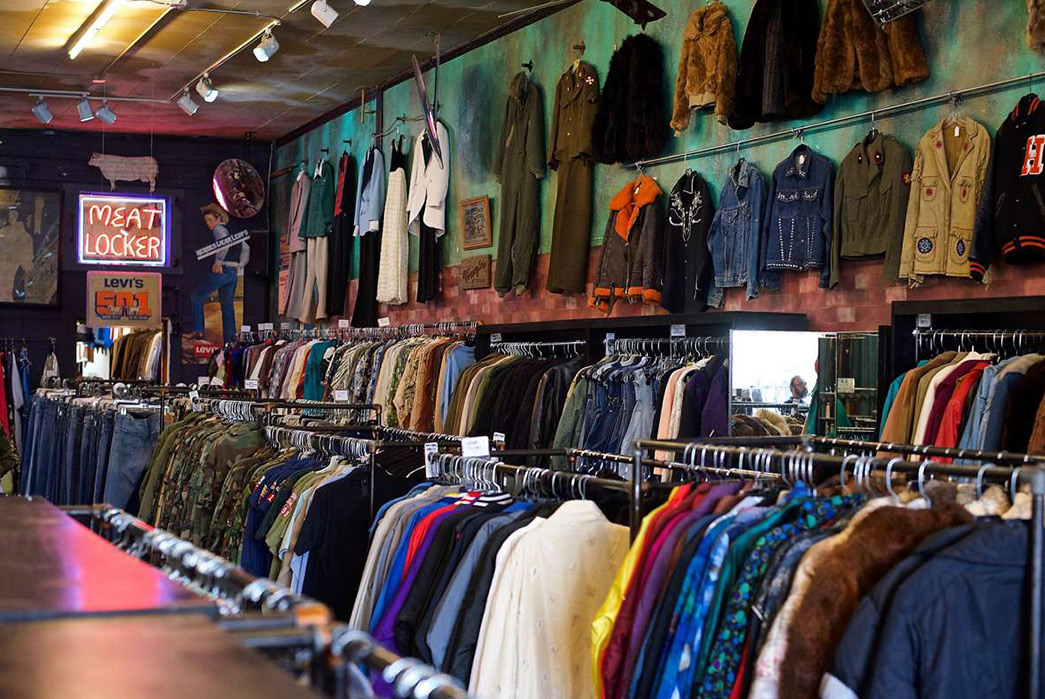
Image via SF Chronicle
Not all venues for vintage are created equal! Here are the spots you may encounter on your vintage hunt:
Specialty Stores and Boutiques
The best places to buy well-curated, quality vintage clothing. A good quality vintage boutique will typically be owned by someone passionate about vintage goods, with the experience and connections needed to obtain top drawer vintage stock. Boutiques tend to be more curated and drilled down—some may even have a specialty i.e. WWII militaria or French workwear. You will be able to ask the owner or boutique staff about the garments and their age/rarity and get an understanding of the garment. Other, more general vintage stores may be a bit more chaotic or chock-full, with less knowledgeable staff, but they will still have some gems to be uncovered.
If you’re new to the vintage scene and unsure what to look for, try stopping into one of these stores to get a sense of what’s out there and what appeals to you.
Vintage Sections in High Street Stores
Some high street and mall stores like Urban Outfitters have begun to introduce vintage sections. They will typically only feature vintage versions of on-trend items, though often at a higher markup.
Vintage Fairs and Pop-ups
Vintage resellers and stores will gather for larger fairs and flea markets like the Rose Bowl Flea, Inspiration LA, Viva Las Vegas, or A Current Affair in New York. Smaller local pop-ups are also likely to be found near wherever you live. These can be a great opportunity to see a lot of different pieces from a variety of sellers all in one place.
Online Stores
Recent years have seen a rise in the number of online vintage stores on Etsy, eBay, or independent websites. Much like brick-and-mortar stores, the quality and service of these outlets will depend on the management and staff. Always ask for measurements before purchasing to avoid sizing errors (vintage clothing can be washed out or shrunk so the tag size isn’t always accurate).
Thrift Stores
The good ol’ thrift. Not a devoted vintage outlet, but with regular attendance to your local thrift, you will find some good stuff.
Garage Sales and Estate Sales
Pull up and see if there are any good vintage bits among the DVDs, snowshoes, and creepy doll collections. Some of the best deals and best finds can be had at estate sales, just get there early!
The ‘Hand Feel’ Test – How to Scan Clothing
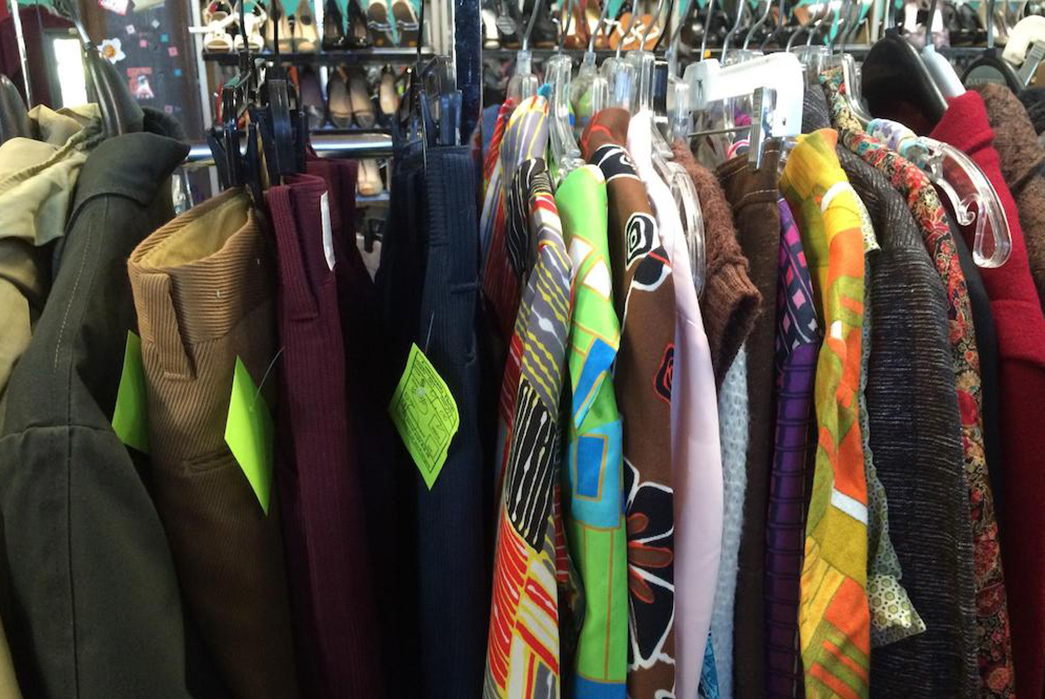
Image via Community Thrift Store
In less curated outlets, there can be an ocean of product—over 95% of which may be forgettable. A way to navigate packed rails of clothing is to quickly thumb through the rail or run your hand along the garments to pick out anything that feels good quality or different. This will help you to separate the wheat from the chaff. You can also do this with your eyes if you’re a bit more experienced in typical fabrics or patterns.
This may sound crazy, but nowadays, 9 times out of 10 I can tell a Polo Ralph Lauren oxford shirt or a Pendleton woolen on a packed clothing rail plaid just from glancing at the arm or feeling it briefly. The same goes for Woolrich jackets and Champion Reverse Weave sweatshirts—you just get a general feel as time goes on.
This method isn’t all about becoming familiar, though, it’s also about discovering something you don’t recognize at all—an unbranded piece or a stunner form a label you’ve never seen or heard of. That can be the real thrill of vintage shopping.
Details To Check and Look Out For
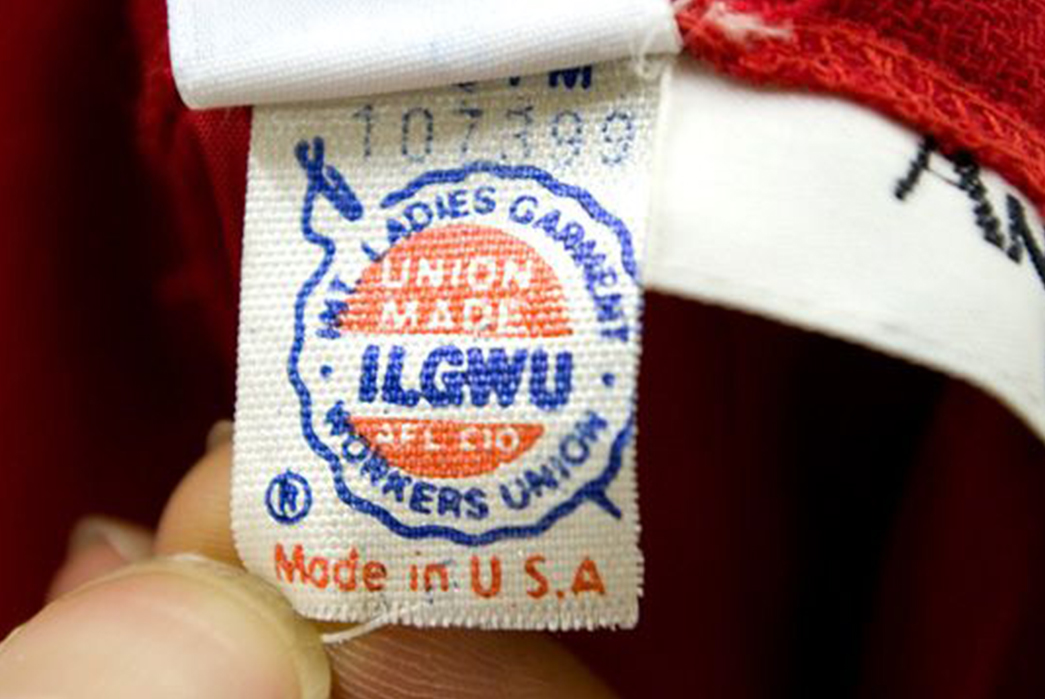
Image via Pinterest
Labels
Labels can tell a lot about a garment’s age. In some cases, it can date it to the year! You can consider the features of a label to tell if something is old, or at least filter out things that are newer and barely ‘vintage’. Woven care labels are generally a sign that the piece is on the older side. Newer garments made in the last 20 years are more likely to have synthetic, printed labels.
Fiber Content
The same goes for the garment’s materials which are indicated on the label. Vintage clothing was much more often made with natural fibers (cotton, linen, wool, etc.) than new ones (polyester, nylon, etc.). There are, of course, exceptions, like rayon and viscose Hawaiian shirts, but if you’re staring at a label that declares “48% cotton, 30% polyester, 20% rayon, 2% lycra”, the garment is probably not born of the past.
Trims & Fastenings
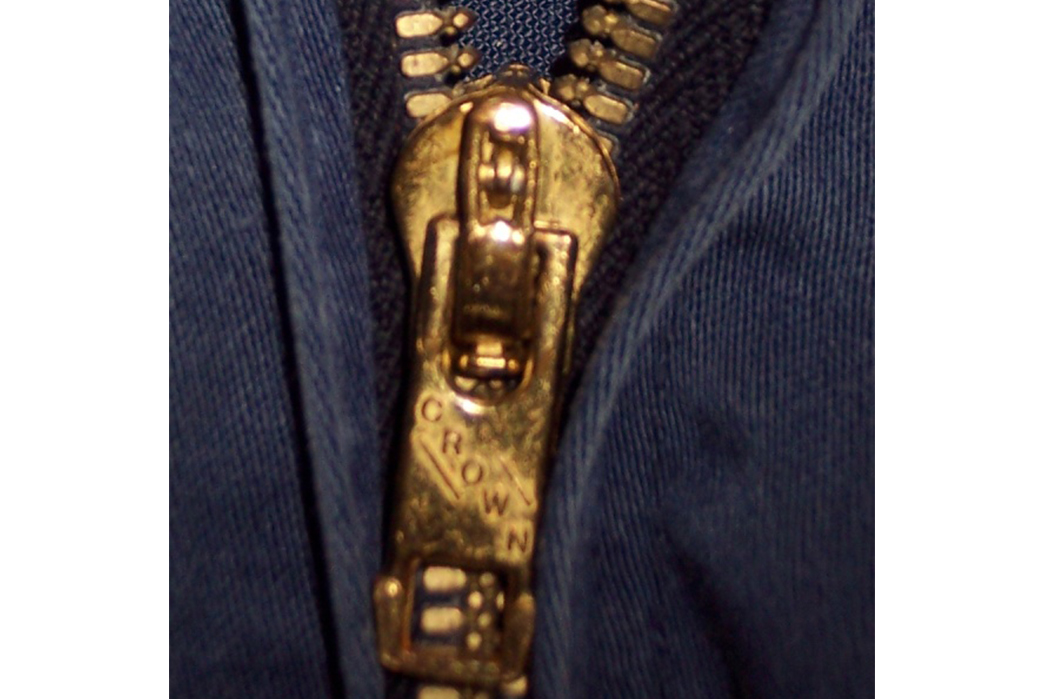
Image via The Steel Zipper
The same concept can be applied to the trims and fastenings of a vintage piece. Look out for metal zippers and snap closures as opposed to plastic or vinyl ones, especially from older hardware manufacturers like Scoville, Universal, Talon, and Crown. Older garments will also be more likely to feature horn, wood, mother of pearl, or metal buttons/snaps, as opposed to plastic ones.
Issue numbers and model numbers
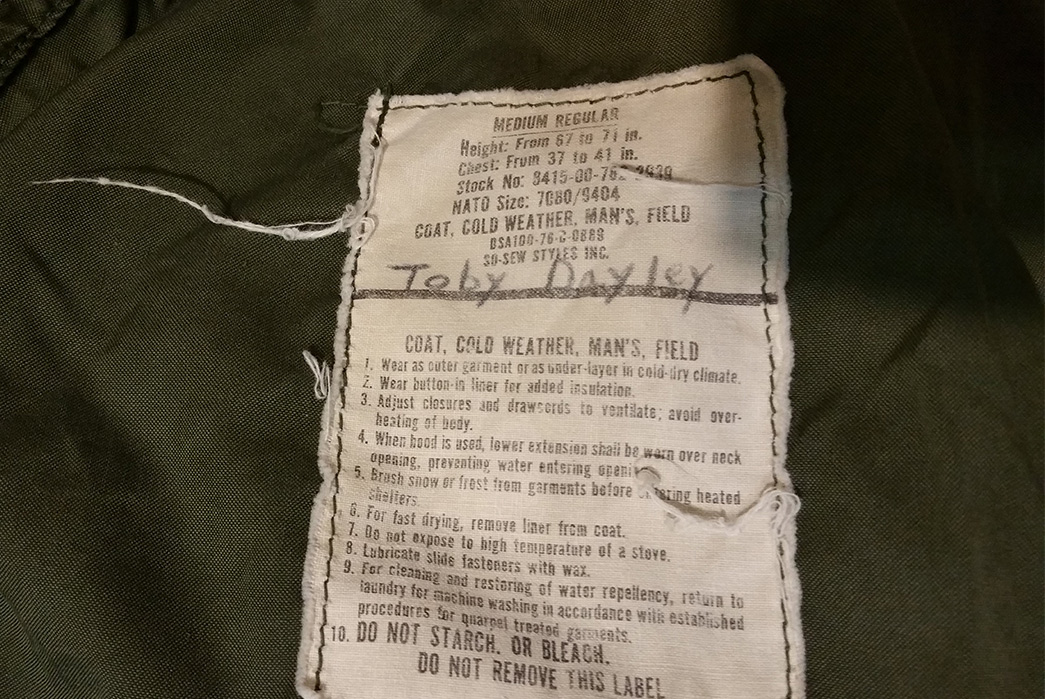
Image via The Fuzzy Felt
This especially applies to vintage military gear, but some care labels and neck labels will feature a product/model number i.e. M-65.
Vintage Branding
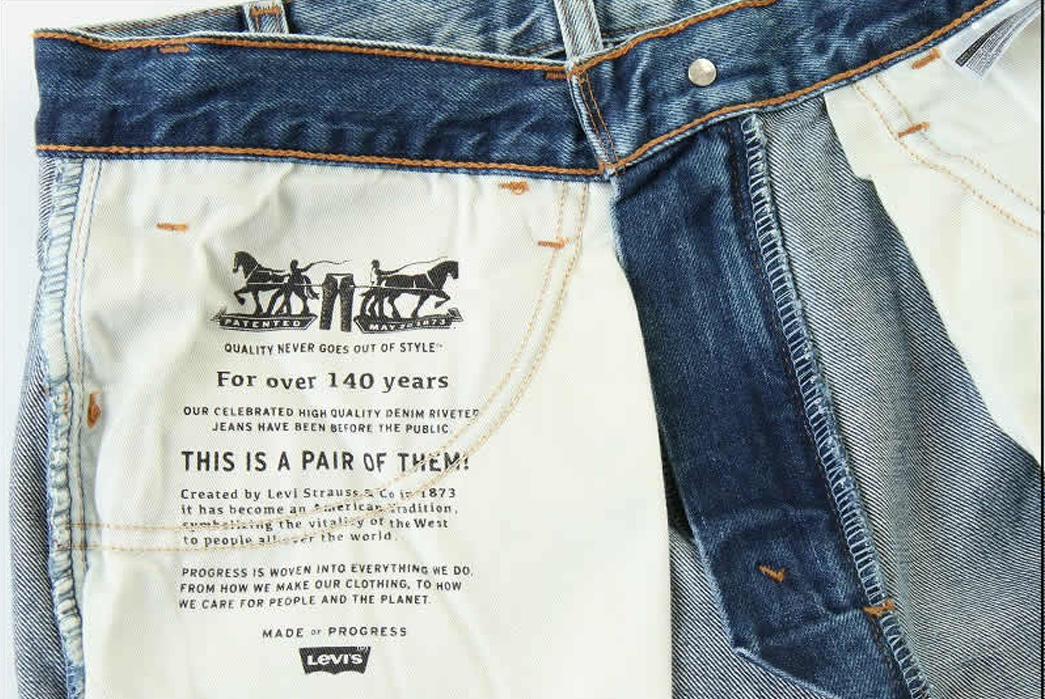
Many iconic brands have different logos and branding over the years which can help you to roughly identify the garment’s age. Levi’s, for example, states on their pocket prints and some labels “For over [X number] years” counting backwards to their founding in 1873. The above pair with its 140 years, would have been made in 2013.
Things To Watch Out For
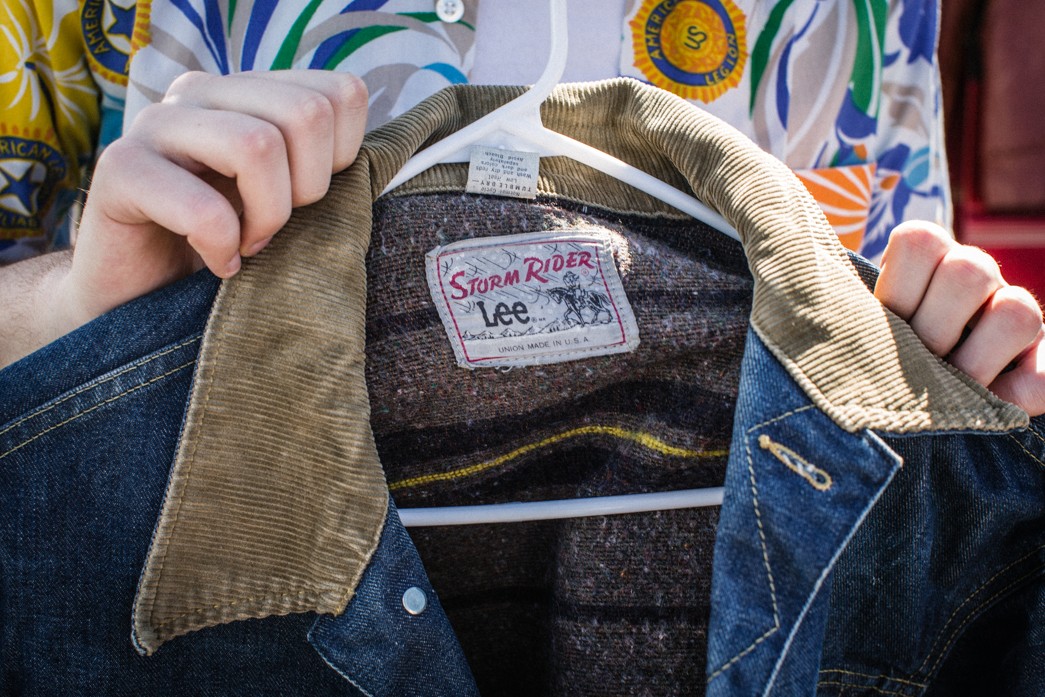
- Damage—Due to the age and multiple owners of some vintage garments, you may encounter some damage like holes, cigarette burns, tears, and rips. Some damage, of course, will add to the character of a garment, But this is subjective and depends on what you consider to be ‘patina’.
- Creasing—Some, less curated vintage outlets receive bulk shippings of vintage clothing packed into large bags or boxes. Some less ironable garments like outerwear and shirts made of felt or wool can suffer from this with damage on those crease lines.
- Stains & Marks—This goes without staying. Garments that are decades old are more likely to encounter some stains and marks. Try holding the garment up to the light before making your final purchase decision.
- Fakes—Fake garments from big labels are likely to crop up here and there, but this is much more likely in a thrift store or less passionate vintage outlet. You can always research and check if the garment is fake using the internet.
- Smells—This is less common as most good vintage and thrift stores have a steam cleaner, but sometimes there is that faint smell of mold, cigarettes, or general ‘age’ that may not come out in the wash. Check our guide for getting rid of it here.
- Pocket surprises—It’s good practice to check pockets for good and bad surprises. Old mints, unsmoked cigarettes from the 80s, a quarter – you get the gist.
- Missing or broken components—Check garments over for broken or missing components—zips, fastenings, pocket linings, etc.
Brands To Look Out For
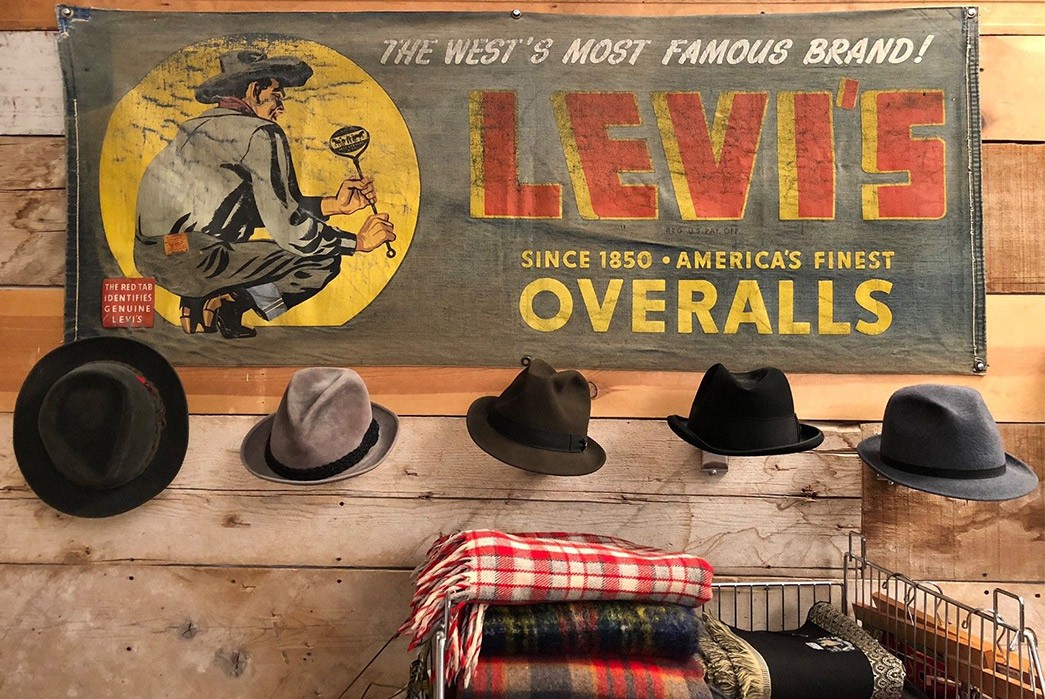
Vintage early-40s Levi’s banner. Image via Ebay.
This is far from an exhaustive list, but all of the following are brands that have been around long enough to have produced clothing at least 25 years ago. Many of them are still cranking out lots and lots of garments, so be sure to refer to the methods above to make sure you’re getting what you expect.
- Aero Leather – Leather jackets
- Adidas – Sneakers, sportswear
- Alden – Boots, welted footwear
- Allen Edmonds – Boots, welted footwear
- Aquascutum – Outerwear, rainwear
- Bass – Welted footwear
- Big Yank – Workwear, shirts
- Blue Bell – Workwear, denim
- Carhartt – Workwear, duck canvas
- Champion – Sportswear, knits
- Converse – Sneakers
- Washington Dee Cee – Workwear, shirts
- Dickies – Workwear, denim
- Duxbak – Workwear, outerwear
- Eddie Bauer – Outerwear, down garments
- Florsheim – Welted footwear
- Foremost – Workwear, denim
- Gitman Bros. – Shirts
- Gloverall – Outerwear, woolens
- Healthknit – Sportswear, knits
- L.L. Bean – Outerwear, boots, sportswear, woolens
- Lacoste – Sportswear, knits
- Lee – Workwear, denim
- Levi’s – Workwear, denim
- London Fog – Outerwear
- New Balance – Sneakers, sportswear
- Nike – Sneakers, sportswear
- Patagonia – Outerwear, techwear
- Pendleton – Workwear, shirts, woolens, blankets
- Penney’s – Workwear, denim
- Polo Ralph Lauren – Sportswear, workwear, outerwear, footwear
- Red Wing – Boots, welted footwear
- Russell – Sportswear, knits
- Schott NYC – Leather jackets
- Sears, Roebuck & Co. – Workwear, denim
- The North Face – Outerwear, techwear
- Towncraft – Workwear, woolens
- Tultex – T-shirts
- Union Made – Anything with a vintage “Union Made” label (or even a modern repro) is likely to be worthwhile
- Vintage Military Apparel – Outerwear
- Woolrich Woolen Mills – Outerwear, woolens, shirts
- Wrangler – Workwear, denim
Determining Value
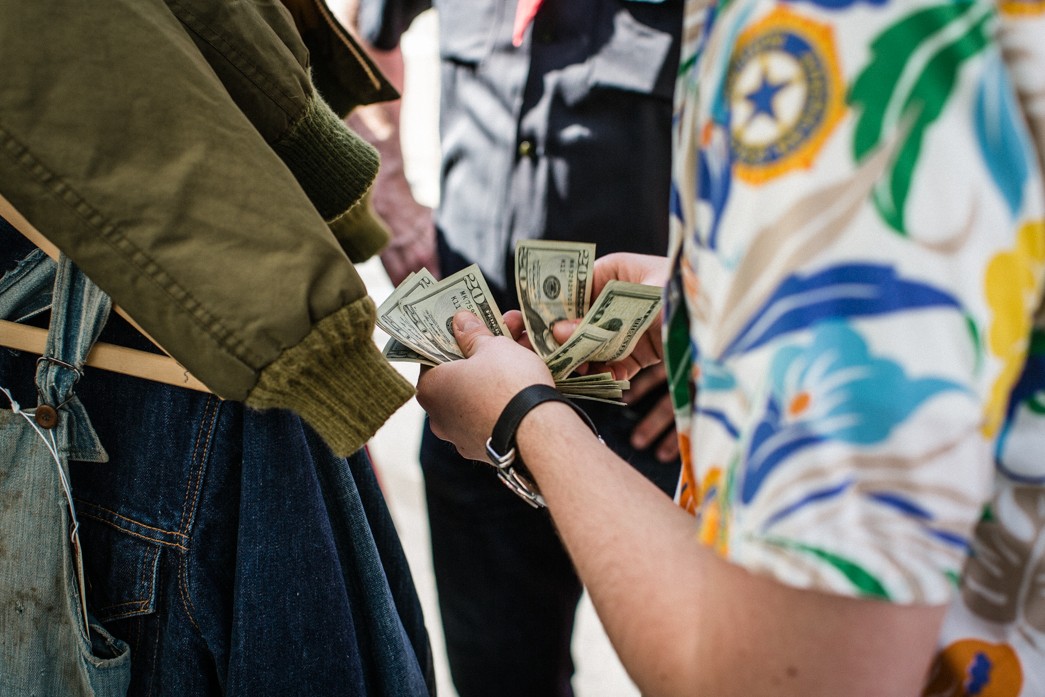
If you see something you like but you’re unsure about the price—maybe too high or too low—use your smartphone to check eBay. You can customize the search to show only completed listings, which will show you what items of that ilk have sold for. If you’re in a more curated vintage boutique, you can chat to the owner or staff about the garment. Of course, there will be some salesmanship there, but they will have a lot more knowledge than eBay!
You could spend your entire life learning the minutiae of different bygone styles and manufacturers, but hopefully this gives you a good foundation to start your vintage journey.

